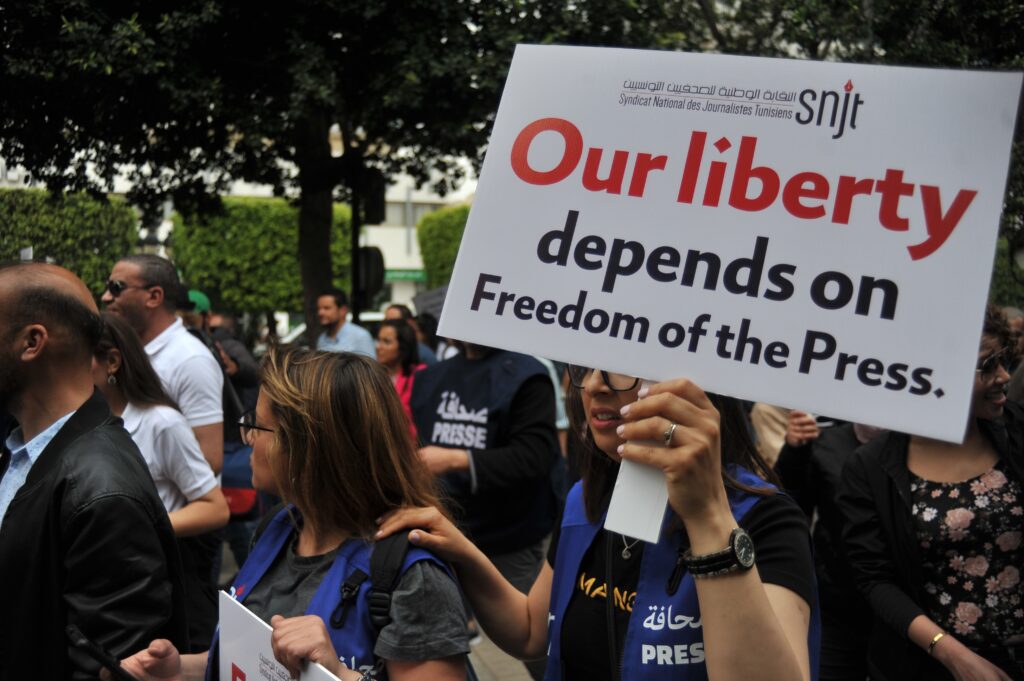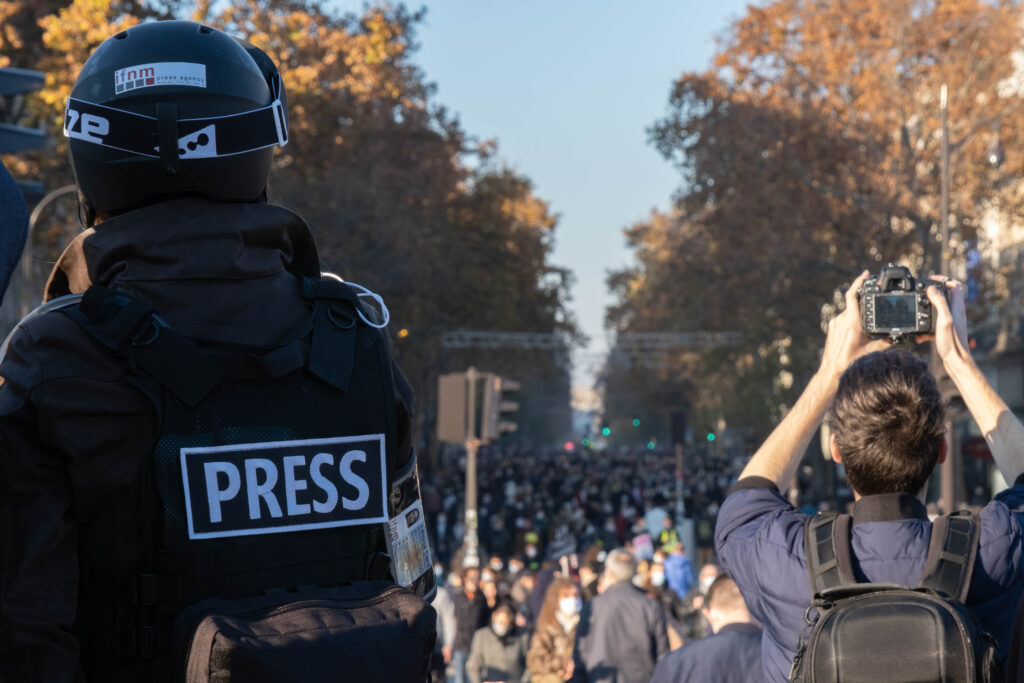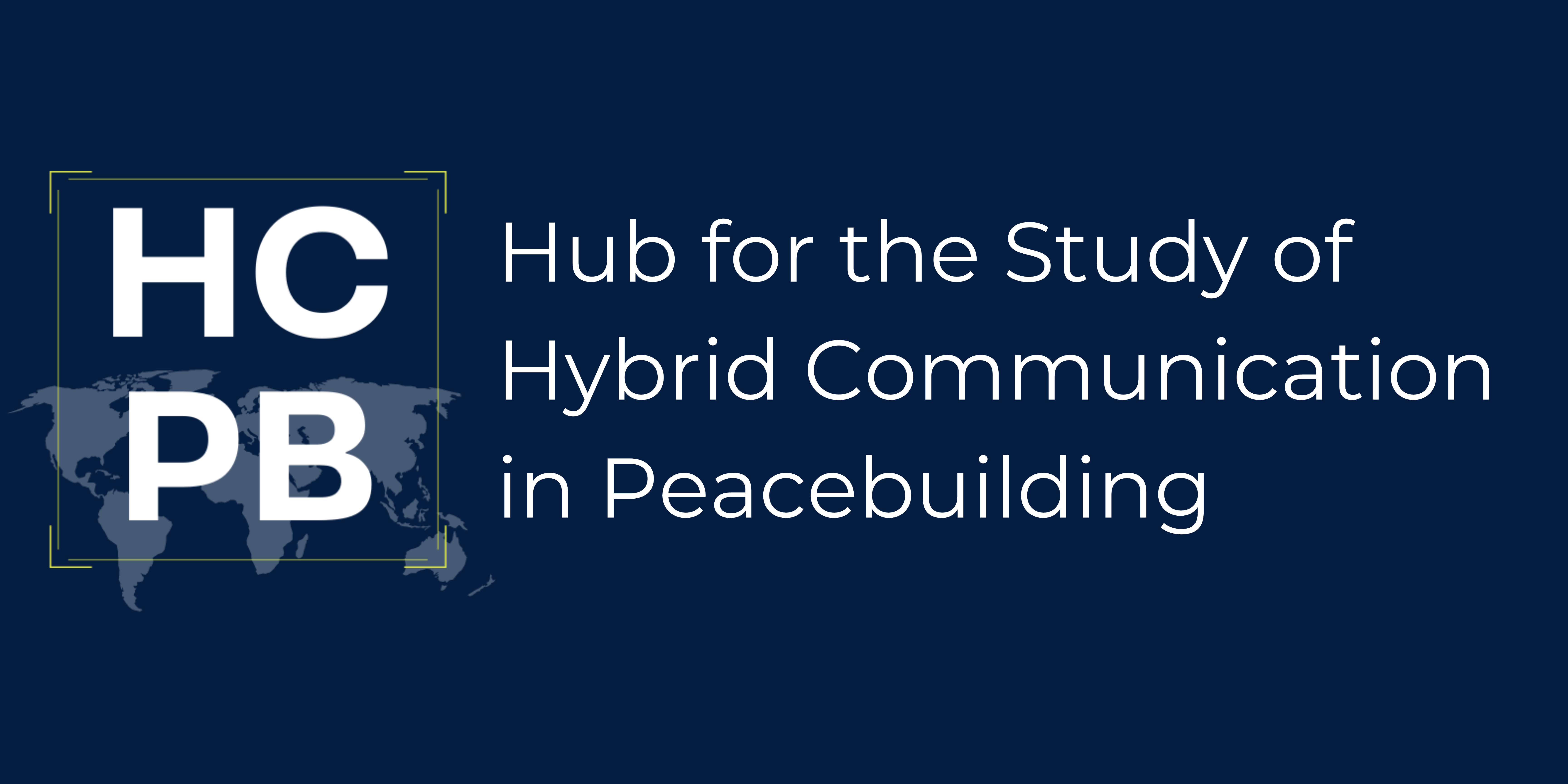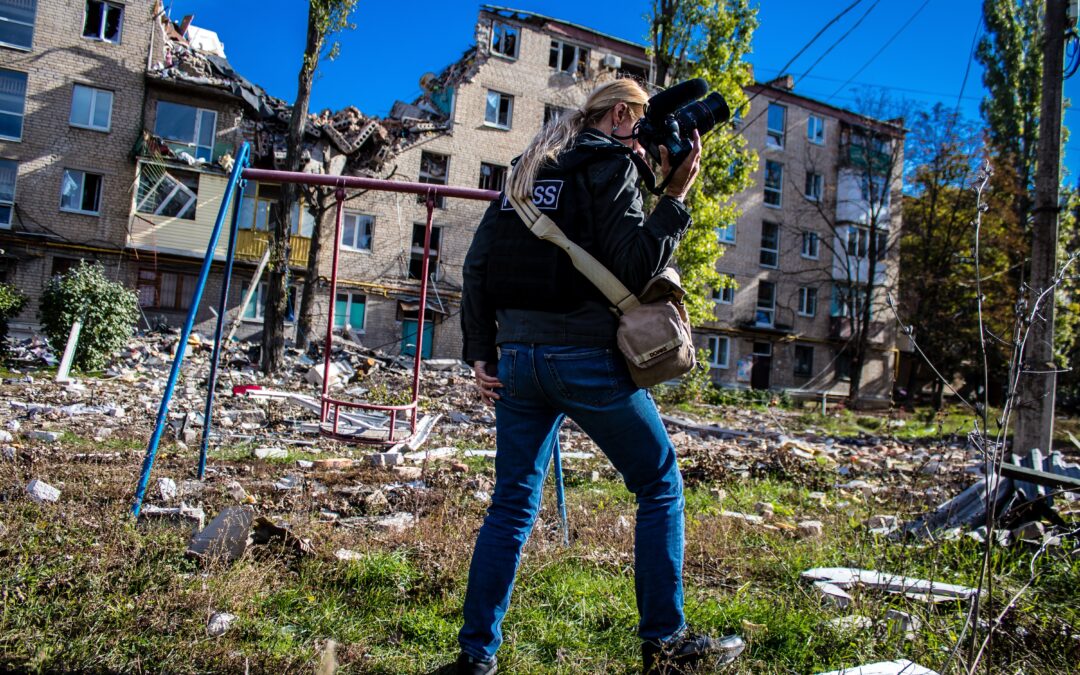By Manizja Aziz and Leon Willems, Free Press Unlimited (FPU)
Introduction
Journalists play a pivotal role in society. They function as watchdogs, hold powerholders accountable and keep the public informed. In order to fulfill their vital role of providing reliable information to the public, they need to be able to do their work safely. This is why the safety of journalists is now widely considered as a universal requirement for development, public awareness, democracy and good governance to flourish.
However, journalists worldwide continue to face a myriad of threats to their safety. These threats can be physical, digital and legal, sometimes interconnected with one another, and often also having ramifications for a journalist’s psycho-social safety. This poses a significant threat to press freedom and access to reliable information and may result in so-called “media dark areas”, where independent and critical reporting is lacking entirely. Moreover, journalists may exercise self-censorship: they stay silent, leave the profession or disappear into exile. This cycle of violence and intimidation can create an atmosphere of impunity: the statistics still show that almost eight out of ten cases of reported killings of journalists remain unresolved.[1]
The first step towards creating safer working conditions for journalists and combating impunity for crimes against journalists is to get a full picture of the violations against journalists. This blog post will delve deeper into the practice of monitoring violations of journalist safety, the crucial role of in-country civil society organisations (CSOs) and the challenges they face in their work.

Safety of journalists and monitoring
The United Nations have recognised the quintessential role of journalists in their 2020 Sustainable Development Agenda by adding a target for access to information and safety of journalists as an essential requirement towards promoting peaceful and inclusive societies. Sustainable Development Goal (SDG) target 16.10 intends to protect those who produce and provide information to the public, and imposes upon nation-states an obligation to monitor and report on this target annually. A key indicator is 16.10.1, which reads as “the number of verified cases of killing, kidnapping, enforced disappearance, detention and torture of journalists, associated media personnel, trade unionists and human rights advocates in the previous 12 months”, and hence recognises the safety of journalist as a precondition for access to information.
Data on violations against journalists is essential to get more insight into their safety situation. This can help to create effective intervention strategies and advocate more effectively for improved legislation and policies, as well as to track any improvement or deterioration in the safety situation of journalists.
In gathering this data, it is important to go beyond data on killings only. In most cases of murders of journalists, there were indications of threats and incidents that preceded the murder. That is why it is vital to get a better grip on violence before the ultimate consequence. Much of the current monitoring efforts are commendable but insufficiently capture the full range of threats in a systematic way that would allow for preventive interventions.
Monitoring by states
The duty to protect journalists and to uphold access to information is enshrined within the International Covenant on Civil and Political Rights (ICCPR). There are two relevant frameworks under which states ought to report on the safety of journalists – the already mentioned Sustainable Development Agenda and the Universal Periodic Review (UPR).
Each year during the High-Level Political Forum, nation-states get the chance to present national progress made in implementing the Sustainable Development Agenda – including the safety of journalists – during the Voluntary National Review (VNR). In addition, nation-states are encouraged to report on their human rights situation in their country through the UPR, which is a recurrent obligatory review mechanism of the UN Human Rights Council. The UPR also gives member states the chance to offer each other recommendations on how to improve the human rights situation in their respective countries. The VNR is, as the name suggests, a soft accountability mechanism, as nation-states can voluntarily sign up to conduct a VNR. When it comes to the UPR, nation-states are encouraged to implement the recommendations that flow from the UPR Working Group sessions, but the recommendations are not legally binding.
Even though both mechanisms have great potential, in practice we see that many nation-states are reluctant to report on the safety of journalists. Since 2015 most states have been reluctant or negligent to monitor developments falling under SDG indicator 16.10.1.[2]
Monitoring by civil society
This is where the highly important role of civil society comes in. Civil society has the potential to hold nation-states accountable through monitoring and the collection of data that can supplement or even replace the data provided by nation-states. Shadow reporting enables in-country CSOs to highlight their perspective on the progress of SDG implementation, especially when there is a lack of political will by nation-states to provide relevant data on SDG indicator 16.10.1.
The current trending topic of localisation in development efforts also comes into play here. In-country civil society monitors can make use of existing frameworks to pressure the government and advocate for regulatory frameworks – with local legitimacy in the eyes of the public and the media sector. This calls for the need for in-country capacity, stakeholder engagements and advocacy for enhanced journalist safety. Strengthening the systematic collection of local data by in-country monitors should be taken as a starting point.
This can ultimately result in strengthening international agenda-setting efforts, highlighting trends based on data evidence, as well as bringing up specific well-documented cases that will improve the impact of advocacy to prevent further violations and break the cycle of impunity. Global monitoring efforts and advocacy for journalist safety are highly important for international advocacy to UN mechanisms. However, change for better safety ultimately needs to be achieved locally, but local in-country monitors face many obstacles.

Issues
In October 2022, Free Press Unlimited initiated and facilitated a monitoring workshop in The Hague with several in-country monitoring CSOs, following a survey and in-depth interviews with them, to gain more insight into the issues that they face in monitoring violations of journalist safety.[3]
We found that many organisations grapple with a lack of resources and capacity. Monitoring and analysing violations against journalists is time-consuming and requires a specific skill set. Many local organisations do not have the funds to hire a staff member that specifically focuses on monitoring, or to provide their staff members with the necessary training. This lack of resources may also translate into using rudimentary methods and tools for collecting and storing data, which potentially fall short when it comes to analysing the data.
Second, many CSOs which operate in repressive and hostile environments are met with resistance and threats, making it extremely difficult for them to bring violations against journalists to light. Monitoring violations in areas that are conflict-ridden is an even greater challenge, as it is hard to obtain and verify this data. This is where monitoring by in-country and international civil society needs to be combined.
Third, related to the previous point, CSOs often face a lack of reliable and methodologically consistent data that they can rely upon, especially in countries where governmental sources are lacking. They may use other sources such as online sources or self-reporting by journalists and/or media houses. However, some violations are underreported, such as violations against women journalists, violations happening inside the newsroom, and online violations. Relatedly, the digital domain has opened up an enormous variety of new platforms and channels where threats are being published and issued towards journalists. Social media companies and tech corporations are often reluctant to share this data with civil society researchers, who are consequently hampered in their ability to review and analyse expressions, in the form of mass data, that affect the safety of journalists.
These issues must be viewed in the larger context of various organisations employing their own methodologies and differing definitions (e.g., variations in the definition of “journalist” or different classifications of violation types). This lack of consistency complicates the analysis and comparison of datasets from organisations worldwide, hampering cross-country learning and trend analysis. This underlines the importance of standardised definitions and harmonised data, as well as qualitative data to add context to quantitative data.
Conclusions and recommendations
Monitoring violations against journalists is essential to gain a better understanding of the risks that journalists face, and the action and advocacy that are needed to address these risks. In this regard, efforts by CSOs are crucial and add legitimacy. To that end, local capacity of CSOs needs to be enhanced, so they can continue to keep states accountable through their shadow reporting.
Monitoring a wider range of violations, beyond killings alone, helps us to capture trends more effectively and acquire more a priori insight – as killings are often a culmination of preceding threats and attacks – and to move beyond a mere reactionary approach. To this end, the collaboration of CSOs is of key importance, as collaborative monitoring efforts have the potential to raise the issue of journalist safety more effectively. Furthermore, this collaboration can bring more consistency in monitoring efforts, making it possible to compare trends across countries. Examples of such collaborative efforts are the SafeJournalists Network in the Balkans (covering Albania, Bosnia-Herzegovina, Croatia, Kosovo, Montenegro, North Macedonia and Serbia) and the Southeast Asian Press Freedom Monitoring Platform (covering Cambodia, Indonesia, Malaysia, the Philippines, Thailand and Timor-Leste).
Going forward: monitoring efforts in Africa
Collaboration between CSOs can also increase the relevance and capacity of data gathering in Africa. The upcoming joint celebration of the International Day to End Impunity by UNESCO and the African Union (AU) in Addis Ababa, Ethiopia in November this year[4] is an excellent opportunity to improve the data gathering efforts on the safety of journalists in the African continent and laud the efforts of African civil society.
The AU has a platform where violations can be submitted through the efforts of the African Editors Forum. However, it is inadequately funded and lacks a quick response and accountability mechanism by the member states. AU member states and donors should also pledge resources to expand local civil society monitoring including the monitoring of digital violations as engaged in by CIPESA. This will increase the crisis preparedness and response to ongoing and newly emerging conflicts in Africa that have a deep impact on journalist safety. Moreover, it will provide cross-country learning from countries that have the courage to report on the safety of journalists in the VNR process – like Angola and Cabo Verde – and take inspiration from the positive transitions regarding journalist safety in countries like Ghana and Tanzania.
[1] Committee to Protect Journalists, 2023, “Impunity for the killers of journalists at nearly 80% on the International Day to End Impunity for Crimes Against Journalists”, https://cpj.org/thetorch/2023/11/impunity-for-the-killers-of-journalists-at-nearly-80-on-the-international-day-to-end-impunity-for-crimes-against-journalists/.
[2] UNESCO Director General’s 2022 Report on the Safety of Journalists and the Danger of Impunity, p. 32, https://unesdoc.unesco.org/ark:/48223/pf0000383595.
[3] Free Press Unlimited, 2022, “Improving monitoring for crimes against journalists: Report on monitoring workshop”, https://kq.freepressunlimited.org/wp-content/uploads/2022/11/UNESCO-report-17-Oct-Improving-monitoring-for-crimes-against-journalists.pdf.
[4] See https://www.unesco.org/en/articles/international-day-end-impunity-crimes-against-journalists-2024.

